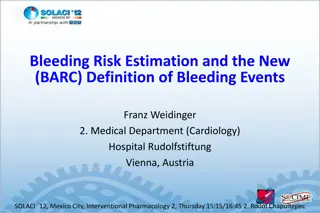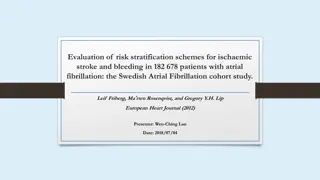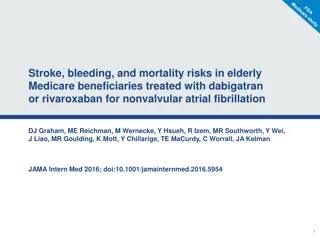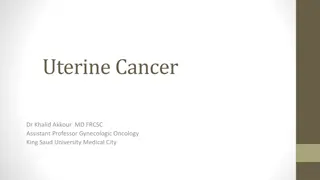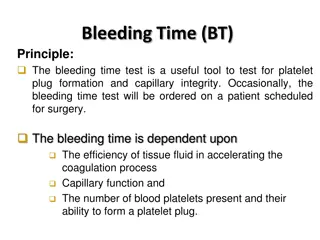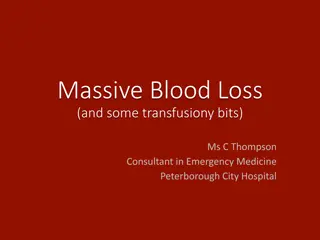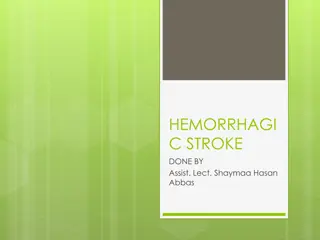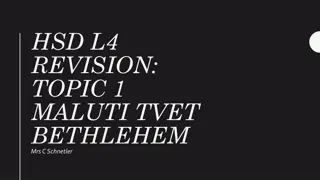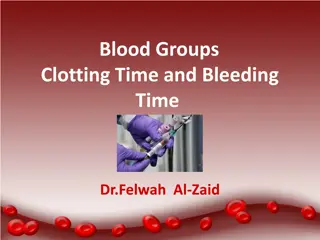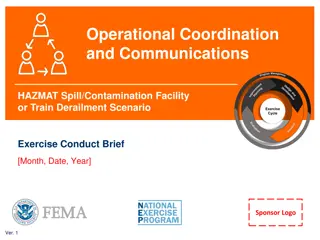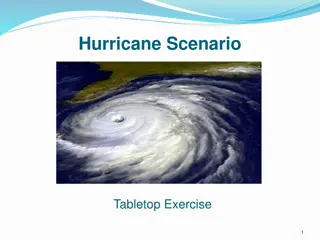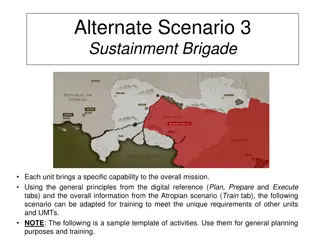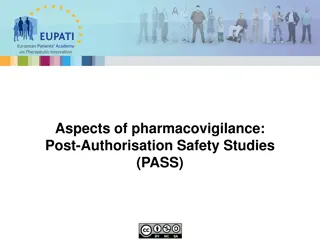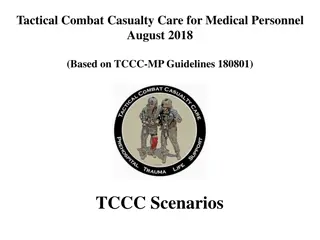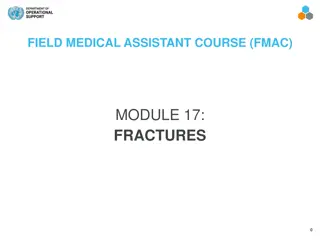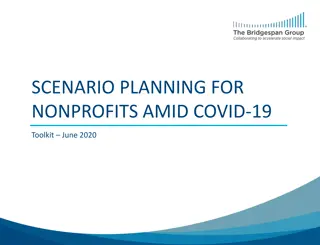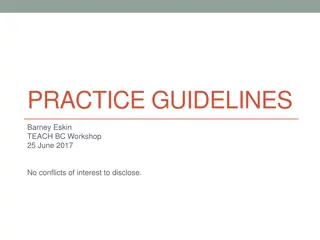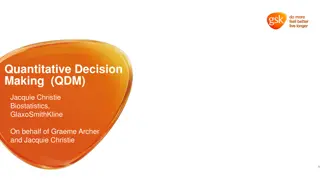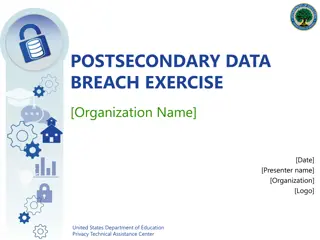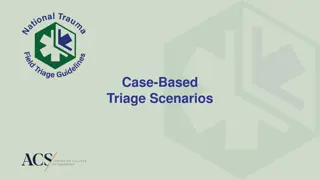TCCC Critical Decision Case Studies: Bleeding Management Scenario
This presentation focuses on a critical decision case study in Tactical Combat Casualty Care (TCCC) involving a casualty with high amputations and ongoing massive hemorrhage. The scenario explores the challenges of managing uncontrolled bleeding in a combat situation and provides insights into the recommended actions for controlling the bleeding effectively using Combat Gauze with direct pressure.
Uploaded on Jul 29, 2024 | 0 Views
Download Presentation

Please find below an Image/Link to download the presentation.
The content on the website is provided AS IS for your information and personal use only. It may not be sold, licensed, or shared on other websites without obtaining consent from the author. Download presentation by click this link. If you encounter any issues during the download, it is possible that the publisher has removed the file from their server.
E N D
Presentation Transcript
TCCC Critical Decision Case Studies TCCC-MP 180801
Disclaimer The opinions or assertions contained herein are the private views of the authors and are not to be construed as official or as reflecting the views of the Departments of the Army, Air Force, Navy or the Department of Defense. - There are no conflict of interest disclosures.
Learning Objective APPLY your knowledge of TCCC to selected Critical Decision Case Studies in TCCC.
The Biggest Challenge in TCCC Knowing WHEN to use the interventions taught in TCCC Based on a suggestion by COL Bob Mabry TCCC Critical Decision Case Studies will help to illustrate which interventions to perform for casualties with life-threatening conditions.
TCCC Critical Decisions Bleeding Case Study 1 The Setting A unit is on a dismounted mission in Afghanistan. Dismounted IED attack. The unit has no junctional tourniquets. There is no effective incoming fire at the moment.
TCCC Critical Decisions Bleeding Case Study 1 The Casualty High amputation right leg Below the knee amputation left leg Ongoing massive hemorrhage from his right leg amputation site Too proximal to be controlled by a tourniquet
TCCC Critical Decisions Bleeding Case Study 1 Question What is the NEXT action you should take? 1. Combat Gauze applied with at least 3 minutes of direct pressure at the bleeding site 2. Start an IV 3. Construct a pressure dressing over the bleeding site 4. Apply direct pressure over the femoral artery at the level of the inguinal ligament
TCCC Critical Decisions Bleeding Case Study 1 Correct Answer and Feedback 1. Combat Gauze applied with at least 3 minutes of direct pressure at the bleeding site In this casualty with uncontrolled junctional bleeding in the right upper thigh, since the unit has no junctional tourniquets and since the bleeding site is too proximal on the leg to be controlled with a limb tourniquet, the best option is direct pressure with Combat Gauze. Pressure dressings and pressure applied to so-called "pressure points" at vascular sites proximal to the bleeding have not been proven to be effective.
TCCC Critical Decisions Bleeding Case Study 2 The Setting A squad of Marines is engaged in a small arms battle with hostile forces RPG blast near one of the unit members Casualty lying on his right side There is no effective incoming fire at the moment
TCCC Critical Decisions Bleeding Case Study 2 The Casualty The casualty is moving around and awake, but his movements are not purposeful and he is not responding to questions Face and neck wounds (not airway) are present Several teeth are missing, and there are lip and cheek lacerations There is ongoing severe bleeding from the neck wound No other major bleeding sites are immediately noted He is voicing significant pain
TCCC Critical Decisions Bleeding Case Study 2 Question What is the NEXT action you should take? 1. Perform a cricothyroidotomy 2. Start an IV 3. Apply Combat Gauze with sustained direct pressure at the bleeding site on the neck 4. Administer OTFC to treat the casualty's pain
TCCC Critical Decisions Bleeding Case Study 2 Correct Answer and Feedback 3. Apply Combat Gauze with sustained direct pressure at the bleeding site on the neck This casualty has massive hemorrhage from a neck wound. Tourniquets are obviously not usable, so sustained direct pressure with Combat Gauze is the best hemostatic option available. Also - opioid medications such as OTFC should not be used in casualties in or at risk for shock, which this casualty definitely is.
TCCC Critical Decisions Bleeding Case Study 3 The Setting A small unit is moving across an open area It is night and there is zero visibility without night vision devices The casualty has a gunshot wound in his left leg just above the knee The unit is still taking effective incoming fire
TCCC Critical Decisions Bleeding Case Study 3 The Casualty There is severe bleeding on the thigh on a blood sweep Visualization of the bleeding site is poor He is in extreme pain
TCCC Critical Decisions Bleeding Case Study 3 Question What is the NEXT action you should take? 1. Apply a limb tourniquet high and tight on the left leg 2. Try to guess where the bleeding site is and apply a limb tourniquet just proximal to that. 3. Administer OTFC to the casualty 4. Administer ketamine to the casualty
TCCC Critical Decisions Bleeding Case Study 3 Correct Answer and Feedback 1. Apply a tourniquet high and tight on the left leg For this casualty, with potentially life-threatening bleeding from the gunshot wound to his leg, the most important aspect of care is to control the extremity bleeding. Since the bleeding site cannot be definitively located at this point in his care, the hemorrhage must be controlled by immediately applying a limb tourniquet as proximally as possible on the extremity. Treating the casualty's pain is important, but should be done after bleeding is controlled, once the unit is in the Tactical Field Care phase.
TCCC Critical Decisions Bleeding Case Study 4 The Setting A US Military advisory team is assaulting a terrorist compound They take small arms fire from a roof One team member sustains a GSW just below the left clavicle The casualty is moved to cover for treatment There is no effective incoming fire at the covered location
TCCC Critical Decisions Bleeding Case Study 4 The Casualty There is very heavy bleeding from the wound just below the left clavicle. Breathing is not labored. The wound is noted to have a deep wound track Efforts to control the bleeding with Combat Gauze are unsuccessful
TCCC Critical Decisions Bleeding Case Study 4 Question What is the NEXT action you should take? 1. Construct a pressure dressing over the wound using standard gauze 2. Start an IV 3. Use a hemostat to reach in the wound and clamp the bleeding vessel 4. Apply XStat into the wound tract
TCCC Critical Decisions Bleeding Case Study 4 Correct Answer and Feedback 4. Apply XStat into the wound tract For uncontrolled bleeding from a wound with a deep wound track such as in this casualty, XStat is clearly the best of the listed options. Neither a limb tourniquet nor a junctional tourniquet is usable and Combat Gauze has not been effective.
TCCC Critical Decisions Bleeding Case Study 5 The Setting A helicopter is disabled by small arms fire and crashes 2 of the crew are dead 1 crew member has severe head trauma and is unconscious she is being treated by another medic You are treating the 4th member of the flight crew - the pilot There is no effective incoming fire at the crash site
TCCC Critical Decisions Bleeding Case Study 5 The Casualty The pilot is alert and complains of severe left hip pain Breathing is unlabored with an O2 sat of 96% Blood sweep shows no external hemorrhage You examine his pelvic region and find a large area of bruising over his left hip There is marked tenderness to palpation in that area
TCCC Critical Decisions Bleeding Case Study 5 Casualty Dashboard AVPU Airway Breathing Radial Pulse O2 Saturation 97% Alert Patent patient is talking well RR 19 and unlabored Present but weak
TCCC Critical Decisions Bleeding Case Study 5 Question What is the NEXT action you should take? 1. Administer OTFC 800 ug for pain 2. Apply a pelvic binding device for suspected pelvic fracture 3. Start an IV and administer 500 mL of Hextend 4. Administer the Combat Wound Medication Pack
TCCC Critical Decisions Bleeding Case Study 5 Correct Answer and Feedback 2. Apply a pelvic binding device for suspected pelvic fracture The diagnosis of immediate concern here is a suspected pelvic fracture, so a pelvic binding device should be applied immediately. Pelvic fractures may be associated with non- compressible bleeding. This casualty has a weak radial pulse and may be going into hemorrhagic shock. He may need fluid resuscitation shortly, but the pelvic binding device should be applied first. OTFC should not be used in this casualty.
TCCC Critical Decisions Bleeding Case Study 6 The Setting An Army infantry squad is on foot patrol in Iraq A dismounted IED detonates, causing multiple casualties There is no effective incoming fire at the moment
TCCC Critical Decisions Bleeding Case Study 6 The Casualty The casualty you are treating has bilateral lower extremity amputations Both are very high There is severe bleeding from both amputation sites Limb tourniquets are judged unlikely to be successful No other life-threatening injuries are noted
TCCC Critical Decisions Bleeding Case Study 6 Question What is the NEXT action you should take? 1. Administer ketamine since this casualty is at risk of going into shock 2. Start an IV and administer TXA 3. Construct pressure dressing's using standard gauze for both amputation sites 4. Apply direct pressure with Combat Gauze until the unit s SAM Junctional Tourniquet is ready to apply
TCCC Critical Decisions Bleeding Case Study 6 Correct Answer and Feedback 4. Apply direct pressure with Combat Gauze until the unit s SAM junctional tourniquet is ready to apply The correct next action is to apply direct pressure with Combat Gauze until a junctional tourniquet is ready to apply. This action may prevent the casualty from going into shock. An IV, TXA, and ketamine are all good follow-on actions in this casualty, but the first priority is to control massive hemorrhage, which this casualty currently has.
TCCC Critical Decisions Circulation Case Study 1 The Setting A small unit is moving outside of a village There is a single shot from somewhere in the village No other hostile fire
TCCC Critical Decisions Circulation Case Study 1 The Casualty Single gunshot wound to abdomen The casualty is alert and in moderate pain There is no life-threatening external hemorrhage There is a normal radial pulse
TCCC Critical Decisions Circulation Case Study 1 Casualty Dashboard AVPU Airway Breathing Radial Pulse O2 Saturation 97% Alert Patent RR 18 and unlabored Strong
TCCC Critical Decisions Circulation Case Study 1 Question What is the NEXT action you should take? 1. Start an IV and administer TXA immediately 2. Start an IV and administer a unit of freeze dried plasma 3. Administer 50 mg of ketamine IM 4. Administer an 800ug fentanyl lozenge
TCCC Critical Decisions Circulation Case Study 1 Correct Answer and Feedback 1. Start an IV and administer TXA immediately This casualty may have life-threatening intra-abdominal hemorrhage. The next action should be to immediately start an IV and infuse 1 gm of TXA over 10 minutes.
TCCC Critical Decisions Circulation Case Study 2 The Setting A small unit is patrolling outside of a village There is a single shot from somewhere in the village No other hostile fire
TCCC Critical Decisions Circulation Case Study 2 The Casualty Single gunshot wound to abdomen The casualty was alert initially but is now becoming confused The radial pulse is weak You have already started an IV and administered a gram of TXA
TCCC Critical Decisions Circulation Case Study 2 Casualty Dashboard AVPU Airway Breathing Radial Pulse O2 Saturation 96% Alert but confused Patent RR 20 and unlabored Present but rapid and weak
TCCC Critical Decisions Circulation Case Study 2 Question What is the NEXT action you should take? 1. Administer another gram of TXA 2. Infuse 500 mL of Hextend 3. Administer a unit of fresh whole blood as per unit protocol 4. Administer 1 gm of ertapenem to prevent infection
TCCC Critical Decisions Circulation Case Study 2 Correct Answer and Feedback 3. Administer a unit of fresh whole blood as per unit protocol The casualty has gone into shock from intra- abdominal hemorrhage. The best resuscitation fluid for hemorrhagic shock is whole blood and giving a unit of that should be the next action taken.
TCCC Critical Decisions Circulation Case Study 3 The Setting An Army infantry squad is on foot patrol in Iraq A dismounted IED detonates There are multiple casualties There is no effective incoming fire at the moment
TCCC Critical Decisions Circulation Case Study 3 The Casualty Your casualty has bilateral lower extremity amputations There was previously severe bleeding from the amputation sites Limb tourniquets were quickly applied to both legs and are effective The casualty is alert and in significant pain His radial pulse is normal The casualty also has multiple penetrating wounds of the abdomen and pelvis
TCCC Critical Decisions Circulation Case Study 3 Casualty Dashboard AVPU Airway Breathing RR 16 and unlabored Radial Pulse Strong O2 Saturation 95% Alert Patent
TCCC Critical Decisions Circulation Case Study 3 Question What is the NEXT action you should take? 1. Start an IV and administer 1 gm of TXA 2. Start an IV and administer 500 mL of Hextend, since there are no blood products available on this operation 3. Administer 50 mg of ketamine IM 4. Try to convert both tourniquets to other modes of hemorrhage control
TCCC Critical Decisions Circulation Case Study 3 Correct Answer and Feedback 1. Start an IV and administer TXA This casualty does need battlefield analgesia, but the most important aspect of care right now is to start an IV and administer 1 gm of TXA. He is at risk of non- compressible hemorrhage due to his penetrating abdominal and pelvic wounds. He does not require fluid resuscitation at the moment.
TCCC Critical Decisions Airway Case Study 1 The Setting An IED detonates underneath a vehicle in a mounted convoy The vehicle is turned over by the blast The casualty is unconscious She was not wearing a seat belt Her helmet is dented There is no effective incoming fire at the moment
TCCC Critical Decisions Airway Case Study 1 The Casualty Blood and bruising over the right parietal area No facial injuries noted No other injuries noted The unconscious casualty has been removed from the vehicle and is in the supine position Chin lift maneuver accomplished
TCCC Critical Decisions Airway Case Study 1 Casualty Dashboard AVPU Airway Breathing Radial Pulse O2 Saturation 70% Unconscious No injuries noted RR 12 - shallow Normal
TCCC Critical Decisions Airway Case Study 1 Question What is the NEXT action you should take? 1. Cricothyroidotomy 2. Place casualty in a sit-up and lean forward position 3. Start an IV 4. Insert a nasopharyngeal airway
TCCC Critical Decisions Airway Case Study 1 Correct Answer and Feedback 4. Insert a nasopharyngeal airway This casualty may have an airway obstruction. The low pulse oximetry reading indicates a critical level of hypoxia. This casualty needs her airway opened immediately. There are no facial injuries noted, so a cricothyroidotomy should not be attempted until less invasive measures have failed. The casualty should not be placed supported in a sitting position because of the potential for spinal cord injury. Inserting a nasopharyngeal airway is the best option of the choices shown.
TCCC Critical Decisions Airway Case Study 2 The Setting A small unit is on foot patrol There is incoming fire from two hostiles The hostile threat is quickly eliminated by the unit One of your unit members sustains a gunshot wound to the lower face There is no further effective incoming fire


